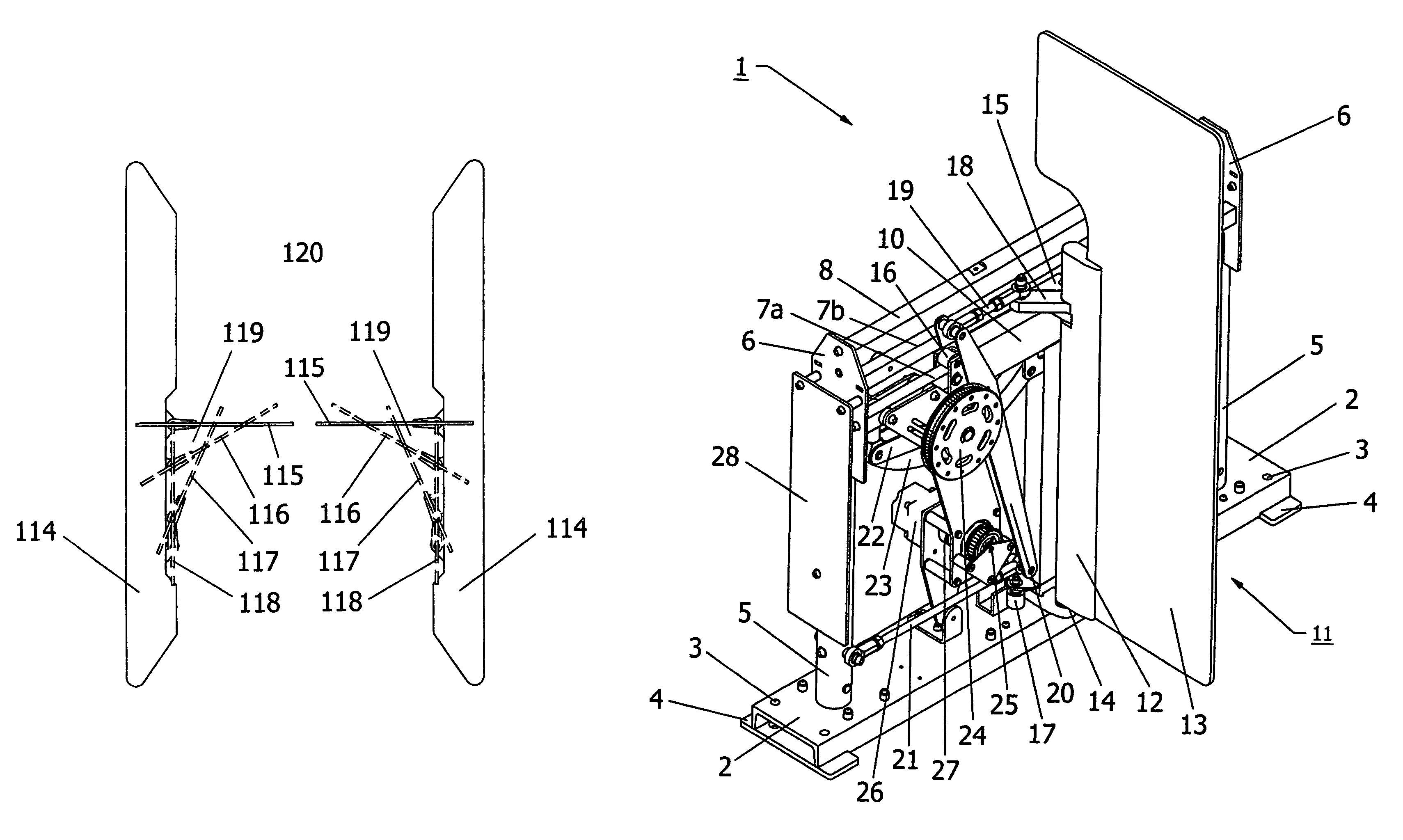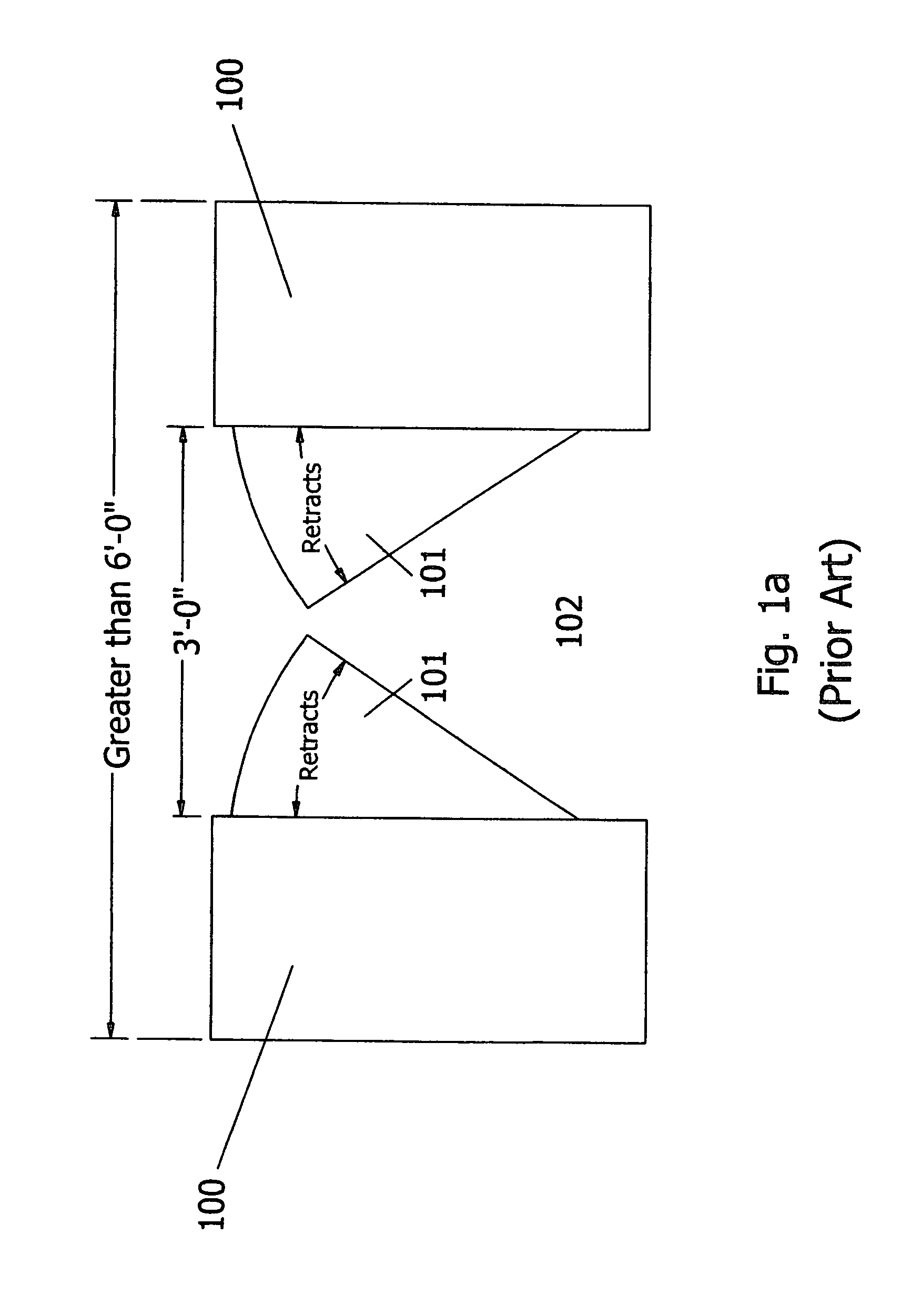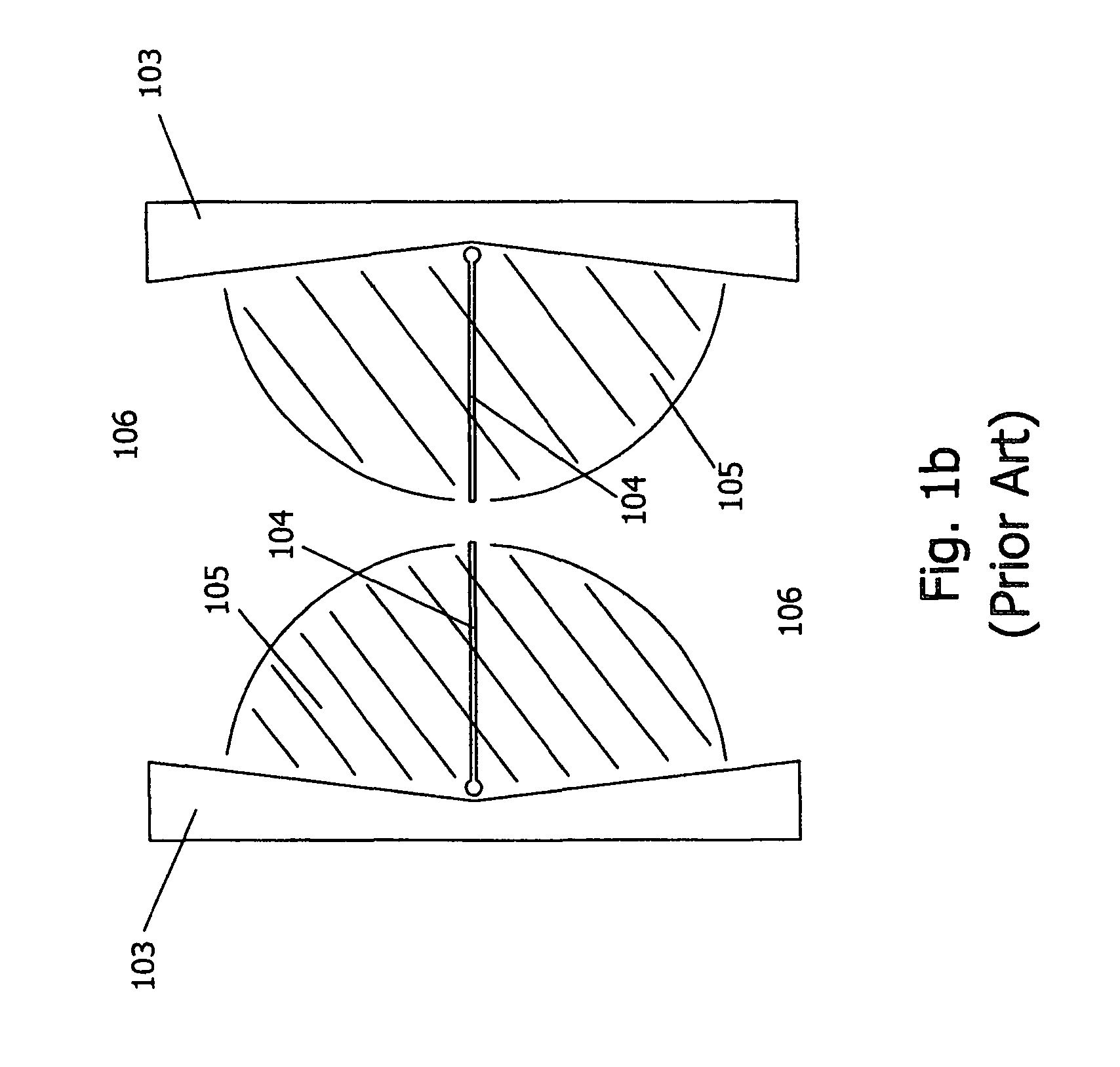Compound barrier mechanism for passageway control
a barrier mechanism and passageway technology, applied in the field of barriers, can solve the problems of inefficient space use of the rotating leaf unit, damage to the space left below, and ineffective use of the space by the rotating leaf uni
- Summary
- Abstract
- Description
- Claims
- Application Information
AI Technical Summary
Benefits of technology
Problems solved by technology
Method used
Image
Examples
Embodiment Construction
[0039]Reference should now be made to drawing FIGS. 2a-9, provided for purposes of illustration only, and on which the figure numerals in parentheses (when used) refer the reader to the figure in which the element(s) being described are more fully shown, although the element(s) may be shown on other figures also.
General
[0040]The invention is applicable to moving any substantially planar barrier, or panel, in that all advantages can apply whether the barrier is a series of vertical or horizontal bars affixed to a full or partial frame, or as in the initial target market, a glass pane of waist or full height.
[0041]In the case of a full height glass pane, the intent is to create an unattended entrance. It is further the intent to use the invention in tandem, such that an enclosed vestibule-type area, for observation and possible detention, can be created as a standalone product. This is desirable when the need to handle ADA traffic precludes the use of a revolving door or there is inad...
PUM
 Login to View More
Login to View More Abstract
Description
Claims
Application Information
 Login to View More
Login to View More - R&D
- Intellectual Property
- Life Sciences
- Materials
- Tech Scout
- Unparalleled Data Quality
- Higher Quality Content
- 60% Fewer Hallucinations
Browse by: Latest US Patents, China's latest patents, Technical Efficacy Thesaurus, Application Domain, Technology Topic, Popular Technical Reports.
© 2025 PatSnap. All rights reserved.Legal|Privacy policy|Modern Slavery Act Transparency Statement|Sitemap|About US| Contact US: help@patsnap.com



